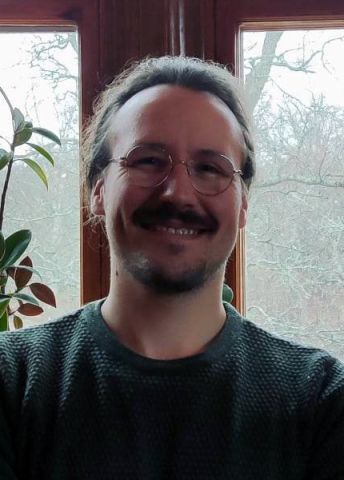
Program for mathematics 2023
Grant to a post-doctoral position abroad
Mats Bylund
Lund University
Postdoc at Université Paris-Saclay, France
Grant to a post-doctoral position abroad
Mats Bylund
Lund University
Postdoc at Université Paris-Saclay, France
Models for small disturbances in chaos
Mats Bylund received his doctoral degree in mathematics from Lund University in 2022. Thanks to a grant from the Knut and Alice Wallenberg Foundation, he will hold a postdoctoral position with Professor Jacek Graczyk at Université Paris-Saclay, France.
Dynamical systems is a branch of mathematics that was developed for the understanding of how different systems behave over time – this could be planets orbiting a star, a ball ricocheting on a snooker table or a population of organisms that grows and shrinks over time. The development of modern weather forecasting goes hand in hand with the development the theory of dynamical systems, without it we would still have to predict the weather using coffee grounds or suchlike.
Instead, mathematicians create models for many different natural phenomena, even if weather forecasts still do not stretch over long periods of time. This is because weather phenomena are chaotic. Starting with complex rules for a system is not necessary to achieve chaotic behaviour; even simple rules can cause chaos if they are repeated over and over again, with random behaviour in which initial small differences can develop into dramatically different results.
The planned project will study small disturbances to chaotic systems. One important question is how the dynamic behaviour changes with small disturbances – how robust these systems are. The interaction between the regular and predictable behaviour and the chaotic is of considerable interest. These two differing phenomena are often intricately interlinked. The amplification of the disturbances is strongly dependent on how often they recur and issues surrounding this recurrent behaviour and its impact on the global dynamics is at the heart of the project. The study builds upon the renowned work of two leading Swedish mathematicians, Lennart Carleson and Michael Benedicks, as well as later methods developed to explore dynamical systems.
Photo Georgios Lamprinakis